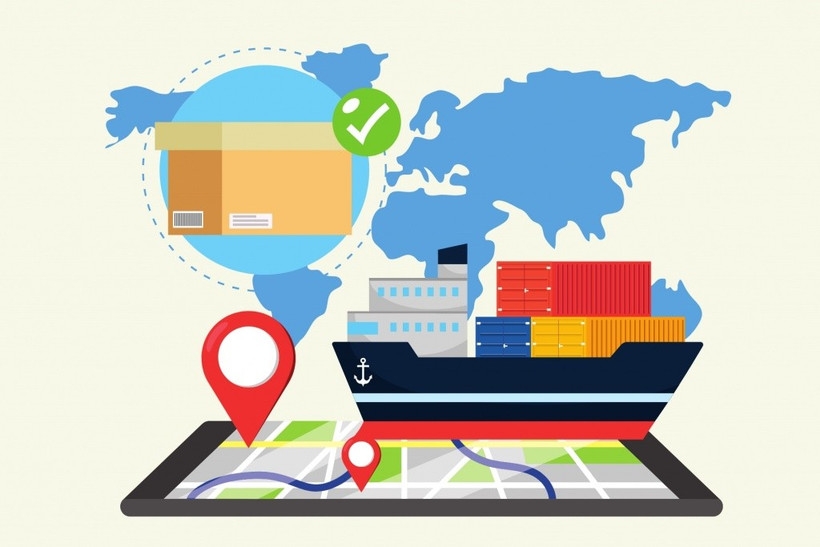Ample room for Vietnam's cross-border e-commerce exports
With Vietnam’s e-commerce revenue reaching US$3.5 billion in 2022 and projected to hit US$13 billion by 2027, cross-border e-commerce is no longer a future trend but a dynamic and rapidly evolving reality.

Vibrant cross-border exports
According to the Vietnam E-commerce Association (VECOM)'s forecast, citing data from Access Partnership, there is strong potential and opportunity for domestic manufacturers to accelerate exports via digital platforms.
Cross-border e-commerce is becoming increasingly popular in Vietnam. During the COVID-19 pandemic, business-to-business (B2B) online exports faced many difficulties. Meanwhile, business-to-consumer (B2C) models, direct transactions between Vietnamese enterprises and global consumers, showed robust growth.
Online shopping platform Shopee reported strong participation by Vietnamese businesses, with more than 350,000 domestic sellers offering over 15 million products to international markets.
Trinh Khac Toan, Northern Regional Director of Amazon Global Selling Vietnam, noted that the global market is rapidly evolving toward e-commerce, and cross-border e-commerce provides a golden opportunity for Vietnamese enterprises to digitally transform and expand globally.
Although many Vietnamese businesses have only recently entered this space, the outlook is promising. Cross-border e-commerce is becoming a vital export channel, helping Vietnamese goods access broader markets. With proactive strategies, Vietnamese enterprises can accelerate their digital transformation and strengthen their positions in global value chains.
Amazon data showed that Vietnamese businesses have significantly expanded their international presence, with the number of products exported and sold on Amazon surging by an impressive 300% over the past five years.
Vietnamese sellers on Amazon have successfully sold around 18 million products to customers worldwide. Hundreds of small and medium-sized Vietnamese enterprises are now selling via Amazon, and the number of businesses earning over US$1 million in revenue has increased tenfold.
According to Bui Huy Hoang, Deputy Director of the Centre for E-commerce and Digital Economy Development under the Department of E-commerce and Digital Economy at the Ministry of Industry and Trade (MoIT), to make cross-border e-commerce a long-term growth driver, Vietnamese enterprises must be proactive in developing a mindset that directly targets international markets and is based on product value.
Major weakness of many Vietnamese companies is their ongoing struggle with basic product listing. What’s still lacking is a strategy for building data infrastructure, logistics, marketing, and international customer service tailored for cross-border e-commerce, he noted.
Ample room for growth
Major trading partners such as China, the US, the EU, Japan, and the Republic of Korea remain key destinations for Vietnamese exports. Among these, the US is currently the largest market for Vietnamese goods via e-commerce platforms.
The emergence of global intermediary platforms such as Amazon, Shopee, and Alibaba in Vietnam is helping many Vietnamese businesses, especially small and medium-sized enterprises, export their goods at low cost and expand their markets efficiently.
Vietnam ranks among the countries with the fastest e-commerce growth rates in the world. Many Vietnamese businesses engaged in cross-border e-commerce have been leveraging support from digital platforms to reduce costs and scale up their global market reach effectively.
To support cross-border export activities, the MoIT has approved the master plan for national e-commerce development for the 2026–2030 period, aiming to position Vietnamese goods under the “Made in Vietnam” label in the global market through digital channels.
The core objective of the plan is to enhance the capacity of domestic businesses and manufacturers, enabling them to master e-commerce tools for export promotion and international market expansion. Vietnam’s deeper integration into global supply chains is seen as a key driver of this effort.
As part of efforts to connect Vietnamese enterprises with global buyers, the MoIT plans to organise the Vietnam Digital Trade and Technology Application Forum 2025 in Ho Chi Minh City on September 4-6. The event is expected to attract more than 300 international businesses from various countries.



